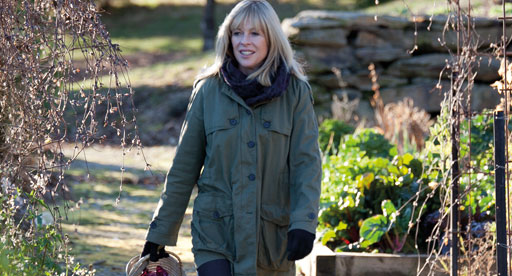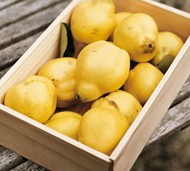
Living here amongst the mountains in Wanaka, the risk of frost is a very real one at both ends of the growing season. While May is considered the last month of autumn, here it’s almost always the month that winter arrives, often with an icy bang. Last year we got snowed in just halfway through the month, an Antarctic blizzard that saw snow banks piled up over a metre high.
Shopping list
Once that happens, the soil temperature plummets and everything comes to a grinding halt – it’s not the air temperature that stalls growth, but the temperature of the soil.
Even with Lake Wanaka acting as a buffer against the cold down at lake level (there’s a three or four degree difference from the lake edge to the hilltop), come May the summer crops need to be in hand out of the cold. I’m ever hopeful that I will get another few weeks to wrap up my tomatoes and chillies with frost cloth in an attempt to eek out the season, but once the first frosts hit the soil temperature never comes back up again.
Perhaps more than any other time of year, May is a month of beginnings as much as endings. While summer vegetable crops may be over, new-season winter crops are just beginning. The spinach, bok choy, coriander, miner’s lettuce and mache seeds that I planted back in March are now ready to harvest, paving the way for wonderful stir-fries and tasty salads.
All these crops (along with my winter brassicas) get a good feed with Tui Organic Seaweed Plant Tonic every month throughout the winter to help their roots manage the fluctuations in soil temperature. For my winter brassica seedlings (which will be ready in July and August) a little side dressing with Tui Super Sheep Pellets provides a little boost to help them mature before the cold really strikes home.
While my pumpkins, onions and garlic are safely in the store, I’ve just planted new-season seedlings of red onions and spring onions in the ground, as well as the seeds of broad beans. If it’s really mild I’ll get a crop from these beans by August. I don’t worry about digging the main-crop potatoes for another month or so – they are fine as long as the ground doesn’t freeze. The cold may be an enemy to the frost-tender but it’s a friend to carrots, beets and brassicas, bringing out their sweetness and flavour.
With a foot in both camps – spring and autumn – comes the late flush of artichokes. I always take a pair of secateurs to pick these so I can cut back the dead wood of already seeded heads, the start of my pre-winter tidy up.
From another family altogether, jerusalem artichokes are also ready to dig. Their sweet, almost waxy tubers are one of those “taste good and good for you” foods, full of inulin, which is a fabulous aid to digestion.
Around this time of year I always get out the big soup pot and the crockpot. My first dispatch is the pumpkins that have lost their stems – without these intact the fruit won’t store through the winter. With a pot of pumpkin soup simmering on the stovetop I’m all set to face those cold frosty mornings.
Out in the orchard May is a good time to pot up those strawberry runners that are weaving their way through the garden so you can plant them out in winter, ready for an early harvest in spring.
In warmer areas the luscious passionfruit is such pretty vine in the garden, and along with the prolific feijoa it will fruit right through autumn. Here in Wanaka the last of the pears and apples are ready to harvest, along with the plump quinces I boil up in a rich syrup to make both a clear ruby jam and an intense quince paste to enjoy with cheese over the winter months.
Quince Jelly and Paste
One recipe that delivers two treats – use the syrup to make a crystal clear ruby Quince Jelly and the quinces to make a melt-in-the-mouth Quince Paste to enjoy with cheese.
Prep time: 30 mins
Cook time: 24-30 hours
Ingredients
- 1 litre water
- 2.5kg sugar + about 4 cups extra for Quince Paste
- 8 (2.5-3kg) medium whole quinces
Method
Bring sugar and water to a boil, stirring to dissolve sugar (15 minutes). Wash the whole quinces, removing any fuzz, and add them to the syrup. Simmer until mixture turns deep, dark red (about 80 minutes), turning fruit now and then so it cooks evenly.
- Carefully lift fruit from syrup and set aside to make Quince Paste.
- To test whether the syrup is ready to form a jelly, drop a spoonful onto a chilled saucer and allow to cool for a few seconds. The surface should set – push it with your fingertip; if it wrinkles up, it's ready. If not, simmer a further 10-15 minutes then retest.
- Pour into sterilised, warm jars and seal tightly while still hot.
- Allow the reserved cooked quinces to cool before removing and discarding the cores.
- Purée the flesh then measure the purée. For every cup of purée stir in 1/2 cup sugar.
- Preheat oven to 50˚C fanbake and line 2 sponge roll tins or a large roasting dish with baking paper.
- Transfer the purée to prepared tin/s and spread evenly – it should be about 3-4cm thick.
- Bake until firm enough to slice (24-30 hours depending on thickness of purée).
- Cool, slice and store in a jar of caster sugar in a cool place.

Post a comment
May in Annabel Langbein's Garden Comments
Hi. I love your recipe for quince jelly and paste. I already made jelly the long way but will do this next. Could you please give me the oven temperature for a non-fan assisted oven? Kind regards Lynette
Lynette Tuohey
Hi Lynette, if using regular bake increase the temperature by 10˚C and the cook time by 10-15 percent. Thanks, Jenna - Tui Team
jenna
Thanks for the Quince recipes, I made jelly last year and would like to make the paste too.
Elizabeth Pakai
I like this recipe - two birds with one stone, so to speak. How many jars roughly would this make?
Christel Bohm
Hi, is it possible to make guava paste and if so, how? Thanks
Dianne McConnell
Hi Dianne, yes you can make this with lots of different fruit – you just have to cook it until it’s no longer sticky. If using guavas you would need to strain out the seeds. Thanks, Jenna - Tui Team
jenna
Hi Christel, the recipe makes 9 cups of jelly and 2 trays of paste. How many jars you need will depend on how big your jars are. Thanks, Jenna - Tui Team
jenna
awesome recipe doing both jelly and paste all in one go. I made the most awesome quince jelly this year but will try this next time, thanks.
Louise